Deng Xiaopings Hometown Tourist Area
Located in Xiexing Town, Guang'an District, Guang'an City, Sichuan Province, Guang'an City, Deng Xiaoping Hometown Tourist Area covers an area of 3.19 square kilometers. It is a complex tourist attraction integrating memorial, patriotic education, ancient town culture, new socialist countryside exhibition and leisure and vacation.
The main attractions are nearly 20 places for Deng Xiaoping's activities in childhood and adolescence, such as his former residence, inkstone pool, Hanlin yard, silkworm house yard, Beishan primary school, Qingshuitang, Shinto monument, Dezhengfang, etc. The exhibition hall of Deng Xiaoping's former residence, Deng Xiaoping Bronze Statue Square and Deng Xiaoping Memorial Hall approved by the Central Committee of the Communist Party of China, and other memorial facilities to display the achievements of the new socialist countryside construction Fangxincun; the ancient town which exhibits the ancient town culture and architectural art.
Deng Xiaoping's Hometown Tourist Area in Guang'an City has been named National AAAAA Tourist Area, National First-Class Garden, National First-Class Museum, National Red Tourism Classic Scenic Area, Revolutionary Traditional Education Base, National Patriotic Education Demonstration Base, National Key Cultural Relics Protection Unit, National Youth Education Base, National Anti-corruption Education Base, Provincial Civilization Unit, etc. Provincial Civilized Scenic Spot; won the Sichuan Golden Panda Award for Tourism, and was selected as the top ten popular red tourism scenic spots, the top ten influential brands of China's red tourism, the top ten scenic spots for tourists'satisfaction in China's red tourism market, and the joint construction of safe and civilized tourism areas by the army, police and the people of Sichuan Province.
Historical evolution
In 1951, after the Deng Xiaoping family left Guang'an and moved to Chongqing, Deng Xiaoping's old residence served as a public canteen, cultural station, kindergarten and storage room.
In December 1989, Deng Xiaoping's old residence management house in Guang'an County was established, and the old residence was officially opened to tourists.
In 1998, Comrade Jiang Zemin inscribed "Comrade Deng Xiaoping's Former Residence;
In August 2001, with the approval of the Sichuan Provincial Committee of the Communist Party of China and the People's Government of Sichuan Province, Deng Xiaoping's former residence reserve with an area of 29.91 square kilometers was established.
In August 2004, Deng Xiaoping Memorial Hall was established; in December of the same year, it was renamed Deng Xiaoping Hometown Administration Bureau, responsible for the management and protection of Deng Xiaoping Memorial Park and Fotou Mountain Scenic Area. Deng Xiaoping's hometown now has six key cultural relics protection units in China, as well as many natural landscapes such as folk customs. In accordance with the principle of cultural relics maintenance, the park has renovated nearly 20 places of activities during Deng Xiaoping's youth, such as his former residence, silkworm house yard, Hanlin yard, Dezhengfang, Shinto monument, Fangniuping, Qingshuitang, Deng Jialaojing, Inkstone washing pond and Deng Shaochang's tomb.
On August 13, 2004, with the approval of the Central Committee of the Communist Party of China, Deng Xiaoping Bronze Statue Square and the Exhibition Hall of Deng Xiaoping's former residence were built.
On February 27, 2013, the founding ceremony of the commencement of the construction of Deng Xiaoping Memorial Hall was held in Deng Xiaoping's hometown.
On February 20, 2014, the Exhibition Hall of Deng Xiaoping's former residence was closed for renovation. After the renovation, the exhibition hall has a construction area of 3800 square meters, consisting of a preface hall, three exhibition halls, a cinema hall and a collection hall.
In July 2014, relatives of Deng Xiaoping donated 441 pieces of cultural relics and relics to the Exhibition Hall of Deng Xiaoping's former residence and the Memorial Hall of Deng Xiaoping. Among them are the 13th National Congress of the Communist Party of China delegate card used by Deng Xiaoping in 1978, the invitation for Deng Xiaoping to attend the Reagan Inauguration Ceremony in 1981, the sweaters knitted by Zhuo Lin himself for Deng Xiaoping, and the blue and white porcelain wine pot used by Deng Xiaoping in Jingdezhen.
In June 2014, the exhibition area of the Third Plenary Session of the Eleventh Central Committee of the Exhibition Hall of Deng Xiaoping's former residence was upgraded, and the projection, layout and lighting in the exhibition hall were renovated.
On August 18, 2014, Deng Xiaoping Memorial Hall opened.
geographical environment
Climatic characteristics
The tourist area of Deng Xiaoping's hometown in Guang'an City is located in the humid monsoon climate zone of the middle subtropical zone, with mild climate and suitable for agriculture in all seasons. Affected by the Pacific subtropical high, the Qinghai-Tibet high, the plateau fluctuation and the southwest warm and humid air flow alternately in summer, the rainfall is abundant and the heat is abundant, forming the climate of light, heat and water in the same season. The annual average temperature is 17.1 C.
geographical position
The tourist area of Deng Xiaoping's hometown in Guang'an City is located in the northern suburb of Guang'an City, Paifang Village, Xiexingzhen Town, Guang'an District. It has a latitude of 30 degrees 01'-30 degrees 48', and a longitude of 105 degrees 56'-107 degrees 18'. It is 7 kilometers away from Guang'an City.
Main attractions
There are nearly 20 main scenic spots in the tourist area of Deng Xiaoping's hometown in Guang'an City, such as Hanlin courtyard, silkworm house courtyard, Deng Shaochang tomb, Deng Jialaojing, Fangniuping, Qingshuitang, inkstone washing pond and Shinto monument, which fully show Comrade Deng Xiaoping's footprint in his youth.
Comrade Deng Xiaoping's Former Residence
On August 22, 1904, Comrade Deng Xiaoping was born here and lived here for 15 years. Deng Xiaoping's former residence is an ordinary three-way courtyard of farmers in eastern Sichuan. The local people kindly call it "the old courtyard of Deng's family". Like many residential buildings in eastern Sichuan, Deng Xiaoping's former residence is reflected in a flourishing pool of Cizhu. The former residence is situated in the East and west, covering an area of 883 square meters. The house is a small green tile roof building with hanging Hill wooden structure. It has a bucket-type load-bearing system. There are 17 rooms, including main room, left room and right room.
Exhibition Hall of Deng Xiaoping's Former Residence
The Exhibition Hall of Deng Xiaoping's Former Residence is the only museum dedicated to the memory of Comrade Xiaoping in China. The exhibition hall is composed of preface hall, three exhibition halls, film projection hall and treasure exhibition hall. It has collected 408 pictures, 170 cultural relics and more than 200 archives and documents about Comrade Xiaoping. Through high-tech means such as sound, light and electricity, it vividly and vividly shows Comrade Xiaoping's glorious life of unremitting struggle for the cause of Chinese revolution, construction and reform.
It adopts reinforced concrete frame structure with a building area of 3800 square meters. The exhibition hall is west-to-east, lined up word by word, with three sloping roofs of green tiles, three times higher than one another. Finally, a monument is erected, which contains the legendary life and great achievements of Deng Xiaoping's "three falls and three rises".
Deng Xiaoping Memorial Hall
Deng Xiaoping Memorial Hall is one of the key projects to commemorate the 110th anniversary of Comrade Deng Xiaoping's birth and another important memorial place to remember his noble style. Built between the Exhibition Hall of Deng Xiaoping's former residence and the Exhibition Hall of Deng Xiaoping's former residence, about 70 meters away from the Exhibition Hall of Deng Xiaoping's former residence in the southeastern direction, occupies an area of 1/2 of the Exhibition Hall of Deng Xiaoping's former residence.
Deng Xiaoping Memorial Hall takes "going home" as its design concept, and takes friendly nature and warm feelings as its architectural design guidance. Its function is to display Comrade Deng Xiaoping's work and life scenes in his lifetime, and to display real relics as its main display. The theme of the exhibition is "Xiaoping, Hello", which aims to highlight Deng Xiaoping, a civilian under the political arena, and to express "the love of the people's leaders". The whole exhibition is based on the basic display of "I am the Son of the Chinese People" in the Exhibition Hall of Deng Xiaoping's former residence. It is a complete supplement to Deng Xiaoping's personality charm, so that people can better understand his life, his feelings and his world.
Deng Xiaoping Bronze Statue Square
Surrounded by three ridges and resembling a natural chair, Deng Xiaoping's bronze statue is sitting in the natural environment of green grass and ancient trees. Deng Xiaoping's bronze statue is 2.5 meters high and weighs 1.2 tons. It sits in the north and faces the south. Its base is made of black sandy granite. In front of it is engraved the five characters of "Deng Xiaoping's bronze statue" inscribed by Comrade Jiang Zemin. The cast bronze statue has a gentle face, thin cheeks and keen eyes. Xiaoping, wearing a short-sleeved shirt, military slacks and cloth shoes along his mouth, sat on a chair with a smile and looked at the mountains and rivers of his hometown kindly. He seemed to shake off the dust and return to his hometown and watch the development and changes of his hometown.
On August 13, 2004, General Secretary Hu Jintao personally unveiled the bronze statue of Deng Xiaoping.
Hanlin courtyard
Hanlin courtyard was built during the reign of Qianlong in Qing Dynasty. It has a history of more than 200 years. It is the old residence of Deng Shimin, the ancestor of Deng Xiaoping, who lived in Hanlin in Qing Dynasty. After Deng Shimin-xian's death, the Deng clan decided to open the Hanlin courtyard into a school hall and set up the first private school in Paifang Village. Deng Xiaoping entered the Hanlin courtyard at the age of 5 to study under the name of Deng Xiansheng.
Hanlin courtyard is situated West to east, with bucket-style wooden structure, suspended Hill roof and small green tile roof. It is a large courtyard with two courtyards. The whole courtyard has 36 houses of different sizes, consisting of Chao Men, theatre buildings, halls and compartments. It covers 2219 square meters and has a building area of 1671 square meters. In December 2002, the Hanlin Courtyard was declared a provincial cultural relic protection unit by the Sichuan Provincial Government.
Silkworm house
The silkworm house yard is a silkworm rearing and silk reeling workshop of the Deng family. It was built in the late Qing Dynasty and has a construction area of 800 square meters. There are exhibition halls, exhibition halls, silkworm houses, cocoon rooms, silk reeling, silk weaving, silk history and culture, Silk Science popularization, silk tourism commodities and other exhibition rooms.
In December 2002, it was announced as a provincial cultural relics protection unit by the Sichuan Provincial People's Government.
Deng Jia Lao well
Dengjialaojing was excavated by the ancestors of the Dengjia family when they moved to Guang'an in the Ming Dynasty. It has been more than 500 years since then. The diameter of the old well is about 1 meter, like an ancient bronze mirror inlaid in the paddy field of lotus leaf Qingqing, which is as clear as a mirror. What is more peculiar is that the well water is abundant all the year round, and the water level is always 60 centimeters higher than the ground level. The well overflows along the well, trickling and running all the year round. Well water is warm and warm in winter, sweet and cold in summer, and the water quality is pure and delicious. This clear well water raised Deng Xiaoping, a great man of a generation. Comrade Xiaoping drank the water from the old well of Deng's family until he left his hometown.
Buffalo flat
Fangniuping is one of the main activities of Comrade Deng Xiaoping in his youth. The building on the right is Laojing Teahouse. It mainly uses the well water of Deng Jialaojing to make tea, so that people can think about the source of drinking water here. Niuping is the place where children in Paifang Village herd cattle, and where Xiaoping often played in childhood. On the cattle farm, Xiaoping's vigorous figure and the sound of Lang Lang's books were left behind.
Divine tablet
During the Jiaqing period of the Qing Dynasty, the imperial court created it to commend Deng Shimin, the ancestor of Deng Xiaoping, for his merits and virtues. Deng Shimin, the ancestor of Deng Xiaoping, was named Mengyan, Yongzheng Ten Years (1732). In the first year of Emperor Qianlong (1736 A.D.), Jinshi and his younger brother joined the Hanlin Academy to teach compilation, and then became a waiter and lecturer. In the tenth year of Emperor Qianlong (1745 A.D.), he was promoted to the Ching Qing of Dali Temple (equivalent to the current President of the Supreme People's Court). Deng Shimin is loyal to the government, Congo upholds integrity, and has made outstanding achievements. In old age, he begs and retires, returns home to die, and teaches the doctor. The Shinto Stele is about 500 meters away from Deng Xiaoping's former residence, and its height is about 5 meters. On the stele, the inscription "imparting the Shinto of Zhengqing and Deng Gong of the Dali Temple of the Doctor" is erected. The dragon carved on the forehead is very dynamic. The dragon head plays pearls and the sun in the Pearl carves a "holy" character. The monument stands on Lao Er (Pinyin: Bx). (This turtle-like animal is called Lao Er, the body of the dragon head is said to be the ninth son of the Dragon King, with infinite strength). On both sides of the monument stands a pillar, and the sculpture of Yunlong is very beautiful. Stone lions are carved and squatted on the top of the pillars. This monument is published in "Guang'an Xin Zhi Jin Shi Zhi". Unfortunately, the original tablet was destroyed during the Cultural Revolution. The monument was rebuilt in 2000 and restored and perfected in March 2003.
German government square
Dezheng Square is about 100 meters away from the Shinto Monument. Like the Shinto Monument, Dezheng Square was built by the court to praise Deng Shimin, the ancestor of Deng Xiaoping. It is because of this archway that the archway village got its name. The original archway was destroyed during the Cultural Revolution. The archway was rebuilt on its original site in August 2002. The archway is 12 meters high, 10 meters wide, with four pillars and three eaves. The middle ridge is carved with hollow carvings. The kisses at both ends correspond to the heads of the square covers. The middle gate spans 4 meters in width, and two pairs of drum-holding stones are engraved with various shallow relief patterns such as "double lion roll belt". On the banner above the Zhongmen, the official books "Dezheng Square" and "Gongle Jinshi" are written. The doors on both sides are slightly lower and narrower than those on the middle. The doors are inlaid with slates and carved with various flower patterns on the slates. The concurrent books include "courtesy", "integrity", "chanting benevolence" and "litigation". Four square loquat pillars are erected on four rectangular stones on the ground. On the loquat pillars, couplets are carved respectively: "Promoting the great cause of the Code for the benefit of the famous officials of the Li and Min Dynasties"; "Minsi is diligent, prosperous, virtuous and foolish, and is the heir of the best poetry and calligraphy". Both couplets and criticisms are portrayals of Deng Shimin's life achievements and virtues.
Baihua Lake
There are many ornamental lotuses planted in the pond. In early summer, green lotus blossoms and fragrant flowers fill the garden. When the breeze blows, the flowers are shy, dancing with the wind and chatting with each other, which adds a lot of vitality and inspiration to the tranquil landscape of lakes and mountains. From this we can not help but think of Zhou Dunyi's "Love Lotus Says": "Lotus, the gentleman of flowers also." "Out of the mud without dyeing, Lian Qing Lian but not demon, in the straight, not vine, Xiangyuan Yiqing, pavilions and pavilions planted quietly, but far-sighted and not obscene.
Deng Shaochang Cemetery
Deng Shaochang, the father of Deng Xiaoping, was born in 1886 and died in 1936 at the age of 50. Deng Shaochang studied at Chengdu Law and Politics School in his early years. He taught after returning to his hometown. He was the director of the Youth League of Xiexing Township and Guang'an County. Having received the new education and seen the world, he was open-minded and upright, progressive in thought, jealous and hateful, and painfully aware of the corruption of the Qing government and the rampage of imperialist aggressors. He joined the local gown organization and became the Third Master of Xiexing's "wharf" family. He was later promoted to "master of flag". He rushed to shout and actively engaged in anti-foreign religion and "road-preserving movement". Before and after the Revolution of 1911, Guang'an established the revolutionary army. Deng Shaochang, a vigorous man, joined the revolutionary army and became the commander of the recruit training battalion. He led the army to participate in the local armed riots. Deng Shaochang is respected and influential in the countryside. His greatest achievement in his life is that Deng Xiaoping chose to study in France. This decision has a great impact on Deng Xiaoping's life and the fate of China as a whole.
In 2002, the Sichuan Provincial People's Government declared Deng Shaochang Tomb as a provincial cultural relic protection unit.
Wash inkstones
Known for its inkstone-like shape, with an area of about 8 mu, Comrade Deng Xiaoping often takes water to study Chinese characters and washes his pens in the pool. The Sichuan Provincial Administration for Industry and Commerce donated 600,000 yuan for restoration according to the original appearance. Nearly 1,000 ornamental lotus roots were planted in the pond and a number of ornamental fish were released.
Mount Bergamot
Located in Guoshan Village, Xiexing Town, 3 kilometers from Xiaoping's former residence. Comrade Xiaoping's grandmother, Dai Shi and his biological mother, Tam Shi, and other ancestors and children of Deng's tombs are located on the hillside of Fotou Mountain, which is a key cultural relic unit at the provincial level. Foshou Mountain is full of citrus, grapefruit, peach, loquat and other fruits planted all over the country. Flowers are flourishing all year round, melons and fruits are fragrant, and it has become a well-known flower and fruit mountain. Mount Fotou is rolling and ravines are vertical and horizontal. It is said that it is like a meditating Buddha, with his left hand holding the knack, his right hand touching the knee and sitting on the lotus terrace. The shallow hills in the distance, like pilgrims, piety arch to the ground, there are thousands of people arching their heads, the trend of Wanshan pilgrimage.
Beishan Primary School
Beishan Primary School is located in the old street of Xiexing Town, Guang'an District, Guang'an City, about 2 kilometers away from Deng Xiaoping's former residence. It was built in the Qing Dynasty. It covers an area of 667.87 square meters and has a building area of 327.54 square meters. The Beishan Primary School was founded by a gentleman surnamed Liu in Xiexingchang and Deng Shaochang, Deng Xiaoping's father, under the influence of the upsurge of running schools in various places, in accordance with the provisions of the Constitution of the Prepared School promulgated by the Qing Dynasty Government. Opened in 1910 in Xuantong, Qing Dynasty, it is the first new primary school in Xiexingchang. From 1911 to 1915, Deng Xiaoping received a preliminary new education here. At that time, there were more than 100 students in Beishan Primary School, divided into Class A, B, C and D. Deng Xiaoping was divided into Class D. The course was totally different from that in private schools. There were not only vernacular Chinese, but also arithmetic, self-cultivation, sports and pictures. Liu Xingyi, Deng Shaochang, Deng Junde, Chen Lushan and Jiang Nengbin were the early teachers in the school. These people are all new-school teachers who are dissatisfied with feudal ethics, realize the trend of the times, have radical ideas, and have participated in the reform and reform activities. Besides teaching new learning, they also teach students about the Huangchao Uprising, the Taiping Heavenly Kingdom Movement, the Yihequan Movement and other historical events.
Deng Xiaoping studied hard and was talented. He was always the top student in his class. In several years of examination, except for one time because of illness, the others are the first, which is highly appreciated and admired by teachers and classmates.
On May 25, 2006, the State Council declared Beishan Primary School as a national key cultural relic protection unit.
Honors
In November 1992, the Guang'an County Government announced that Deng Xiaoping's old residence was the cultural relics protection unit of the county.
In September 1996, the provincial government declared Deng Xiaoping's old residence as a provincial cultural relic protection unit;
In July 1997, it was announced by the Ministry of Propaganda as a national demonstration base for patriotic education.
In July 2001, it was promulgated by the State Council as a national key cultural relics protection unit.
On August 19, 2004, Deng Xiaoping's Hometown Tourist Area in Guang'an City was approved as a national AAAA-level tourist attraction by the State Tourism Administration.
In May 2006, the site of Deng Xiaoping Youth Activities was announced as the Sixth Batch of national key cultural relics protection units.
In May 2008, the Exhibition Hall of Deng Xiaoping's Former Residence was appraised as the first-class Museum by the State Administration of Cultural Relics;
On October 11, 2013, Deng Xiaoping's Hometown Tourist Area in Guang'an City was officially approved by the State Tourism Administration as a national AAAAA-level tourist attraction, the Ninth National AAAAA-level tourist attraction in Sichuan Province;
On July 18, 2014, the Party History Research Office of the Sichuan Provincial Committee officially named Deng Xiaoping's former residence in Guang'an City as the education base of the Party History of Sichuan Province;
On February 4, 2015, the Office of Sichuan Tourism Industry Development Leading Group published the announcement of "Tourist Satisfaction Evaluation Results Table of Key Tourist Scenic Spots in Sichuan Province in 2014" in Sichuan Daily. Deng Xiaoping's Hometown Scenic Spot was rated as the top tourist satisfaction scenic spot in Sichuan in 2014 by tourists;
In February 2015, it was named "National Civilization Unit" by the Central Steering Committee for the Construction of Spiritual Civilization;
In March 2016, Guang'an Deng Xiaoping Hometown Administration was awarded the advanced unit of civilized tourism in Sichuan Province;
On June 7, 2016, Deng Xiaoping's hometown was established as a traditional education base for revolutionary soldiers.
protective measures
In 1987, the Guang'an County People's Government relocated 14 peasant households living in Deng Xiaoping's old residence, and the county cultural administration office worked in Deng Xiaoping's old residence, thus starting the work of protecting Deng Xiaoping's old residence;
In 2002, according to the overall planning of Deng Xiaoping's former residence protection area, more than 1700 villagers in Paifang Village moved out of the core area of the protection area one after another.
In 2014, Hanlin Courtyard was exhibited for more than half a year for protective maintenance and restoration.
Value of meaning
Play an important role in the national patriotic education demonstration base and national defense education base of Deng Xiaoping's hometown tourist area in Guang'an City, disseminate red culture, Practice Socialist Core values, and jointly build spiritual and cultural home.
Tourism information
Tickets for hometown
Tickets for Deng Xiaoping's Hometown Tourist Area in Guang'an City will be free from May 1, 2008. Visitors can go to the ticket office by themselves and collect tickets free of charge (face value 10 yuan) to visit Xiaoping's former residence.
Other Preferences: Free visitors queue up to collect free tickets. The daily reception of ticket-based visitors is limited to 10,000, and the number of visitors per hour is not more than 1,000.
Opening Hours
Opening hours: from 8:30 to 17:30 every Tuesday to Sunday; closed on non-holiday Monday.
Traffic guide
Railways
D5176 Chengdu East 07:30 departure Guang'an Nan 10:11
D5172 Chengdu East 11:42 departure from Guang'an South 14:02
D5178 Chengdu East 13:47 Departure from Guang'an South 15:55
D5174 Chengdu East 17:03 Departure from Guang'an South 19:28
K9362 departures from North Chongqing 06:10 to South Guang'an 07:49
K9366 Chongqing North 12:53 departure from Guang'an South 14:10
Public transport
Take Bus No. 8 (2 yuan per person) or Taxi (about 15 yuan) to get there.
Self driving
Chongqing departure: G65 Chongqing adjacent (water) section - G42 adjacent (water) Guang (an) section - Guang'an station under the high-speed
Chengdu departure: G42 Rongsui (Ning) section - S18 - Guang'an Station under the high-speed
Enter the city area and reach the scenic spot according to the tourist signs.
Line recommendation
One-day Tour in Guang'an: Guang'an City (Siyuan Square) - Stone City of Ba People in Shenlong Mountain - Deng Xiaoping's Hometown
Two-day Tour to Guang'an: Deng Xiaoping's Hometown-Huaying Mountain Tourist Area
D1: Guang'an will meet at noon and visit Deng Xiaoping's hometown, Siyuan Avenue and Siyuan Square after lunch. Residence: Guang'an
D2: Visit Huaying Mountain Tourist Area and send the group after lunch.
Three-day Tour in Guang'an: Deng Xiaoping's Hometown - Stone City of Baren in Shenlong Mountain - Huaying Mountain Tourist Area - Tianyi Valley of Huaying Mountain
D1: Guang'an will meet at noon and visit Deng Xiaoping's hometown, Siyuan Avenue and Siyuan Square after lunch. Residence: Guang'an
D2: Visit the Stone City of Baren in Shenlong Mountain in the morning and Huaying Mountain in the afternoon. Residence: Huaying Mountain
D3: Visit Tianyi Valley in Huaying Mountain and send the group after lunch.
Top-quality tour: Chongqing or Chengdu-Baojusai-Deng Xiaoping's hometown-Shenlong Mountain Baren Stone City-Huaying Mountain Tourist Area-Huaying Mountain Tianyi Valley-Chongqing or Chengdu
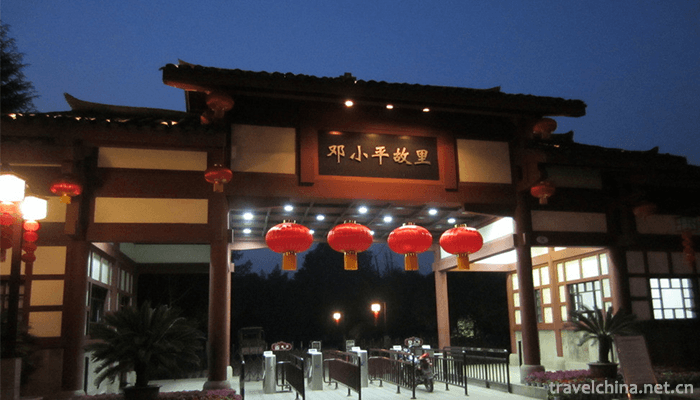
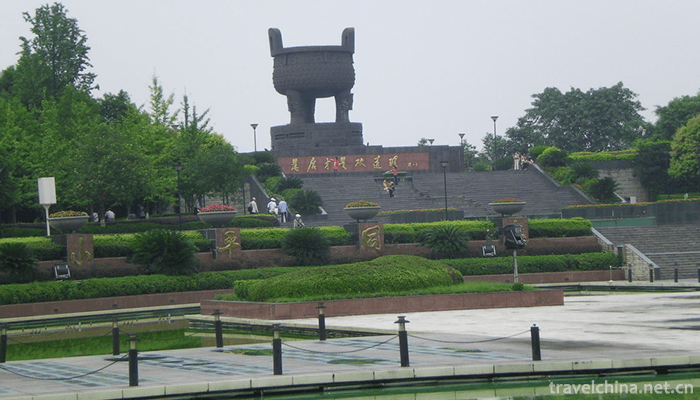
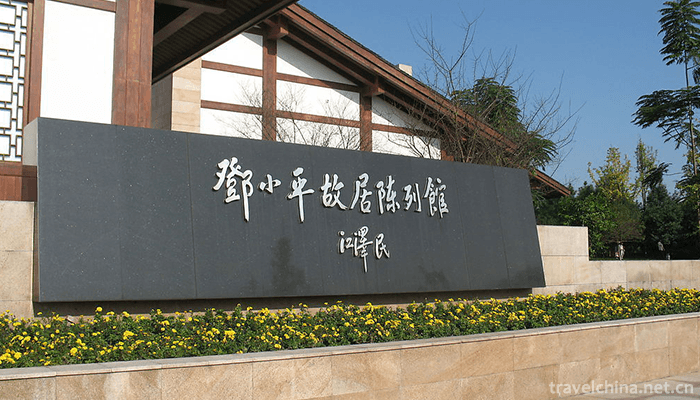
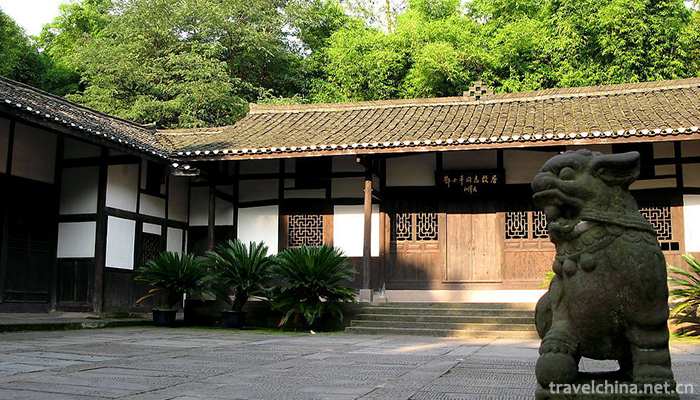
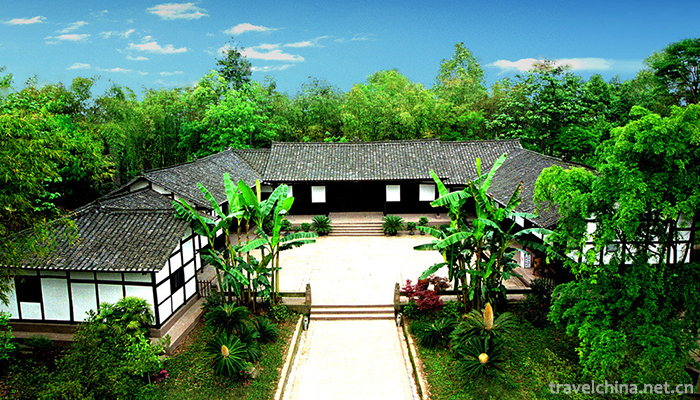
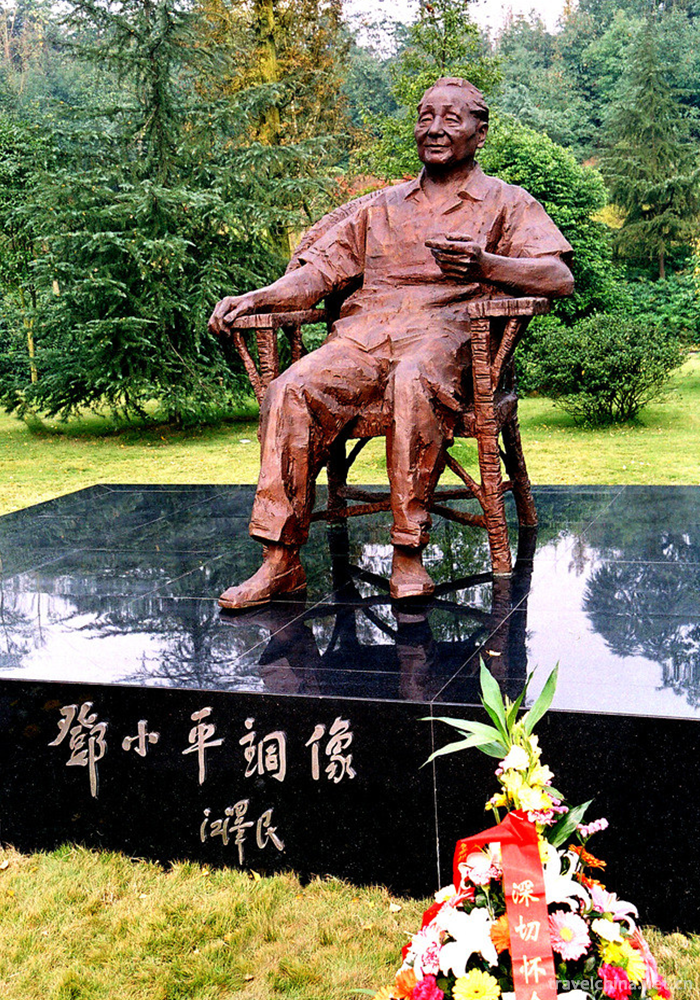

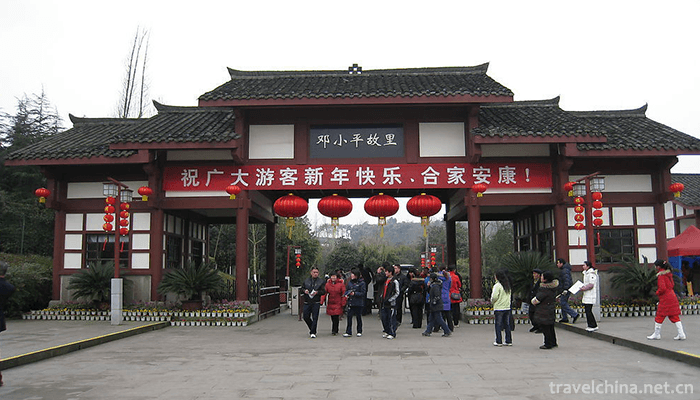
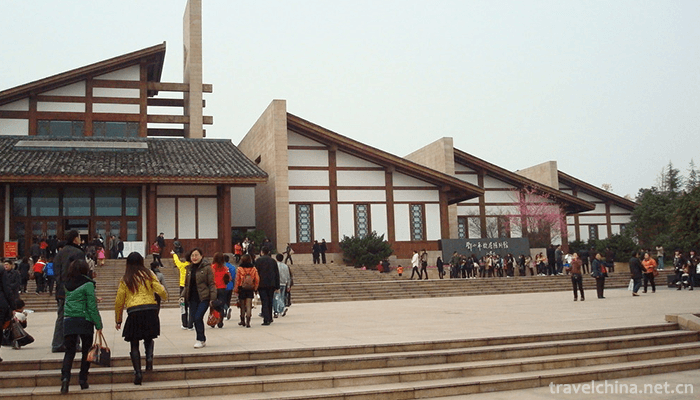


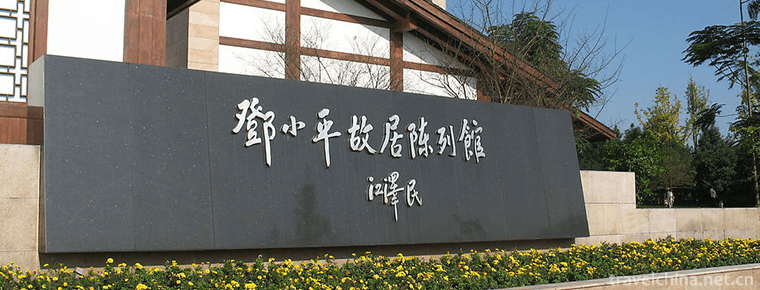
-
1.Detian waterfall
Detian Waterfall is located in Detian Village, Shuolong Town, Daxin County, Chongzuo City, Guangxi Zhuang Autonomous Region. It is located in the upper reaches of Guichun River on the border between C
Time 2018-12-12 -
2.Shangganling Xishui National Forest Park
Shangganling Xishui National Forest Park combines the strong local flavor and exotic style with the elegance of "paradise". It has both unique natural landscape and distinctive humanistic la
Time 2018-12-19 -
3.Seoul Lake Park
Seoul Lake Park is located in Weiyang District of Xi'an City, Shaanxi Province. It is 200 meters west of the cross of Fengcheng 4th Road and Zhuhong Road. It was originally the Unity Reservoir
Time 2019-01-13 -
4.Xishan Scenic Spot Suzhou
Xishan is the abbreviation of Xidongting Mountain. It is 11 kilometers wide in North and south, 15 kilometers long in East and west, and 79.8 square kilometers in area.
Time 2019-02-25 -
5.The Forging Skill of Achang Husha Knife
Achang household knife forging technology, Yunnan Dehong Dai Jingpo Autonomous Prefecture Longchuan County household Sa Township traditional handicraft, one of the national intangible cultural heritag
Time 2019-03-28 -
6.Folk Stories of Ancient Fishing Goose
Ancient fishing geese folklore is a local folklore story based on fishery culture, which originated and spread in the Erjiegou area of Liaohe Estuary, Dawa County, Panjin City, Liaoning Province.
Time 2019-05-01 -
7.Performing and Making Skills of Qiang Flute
Qiang flute is an ancient single-reed gas singing instrument in China. It has a history of more than 2000 years. It is popular in the Qiang people's residence of Aba Tibetan Autonomous
Time 2019-06-10 -
8.Production Techniques of Dahongpao of Wuyi Rock Tea
Wuyi Rock Tea (Dahongpao) production technology, local traditional handicraft in Wuyishan City, Fujian Province, one of the national intangible cultural heritage.
Time 2019-06-30 -
9.Yongnian Western Dialect
Yongnian Western Dialogue is an independent drama formed after Shangdang Bangzi of Shanxi was introduced into Yongnian. During the period of Xianfeng in Qing Dynasty, Shangdang Bangzi was introduced i
Time 2019-07-14 -
10.Ziyang Folk Songs
Ziyang Folk Song is the general name of traditional folk songs spread in Ziyang County, Shaanxi Province, and it is the most representative of traditional folk songs in southern Shaanxi Province. It h
Time 2019-08-16 -
11.Hunter peak
Hunter peak is located in the Shuangqiao gully of Siguniang mountain, with an altitude of 5360 meters and adjacent to Jianzi mountain. The two peaks stand shoulder to shoulder, with a huge stone pillar in the middle
Time 2020-11-05 -
12.Dazhou peoples life
In 2018, the per capita disposable income of Dazhou residents was 20881 yuan. The per capita disposable income of urban residents was 30882 yuan, an increase of 8.8%. Among them, salary income was 17597 yuan, an increase of 7.3%; net ope
Time 2020-12-20